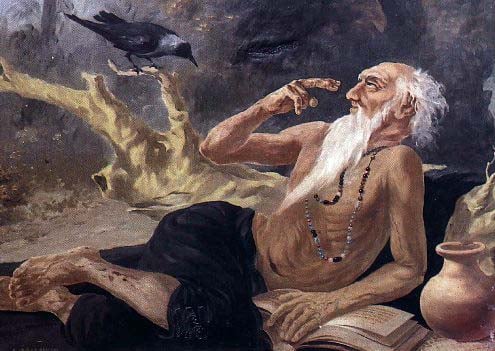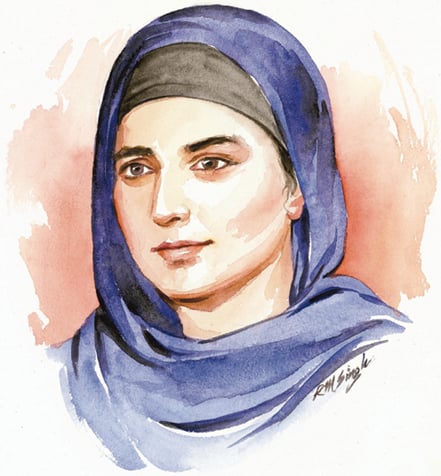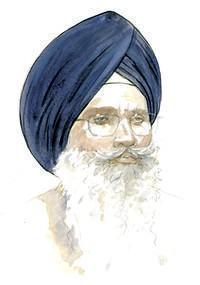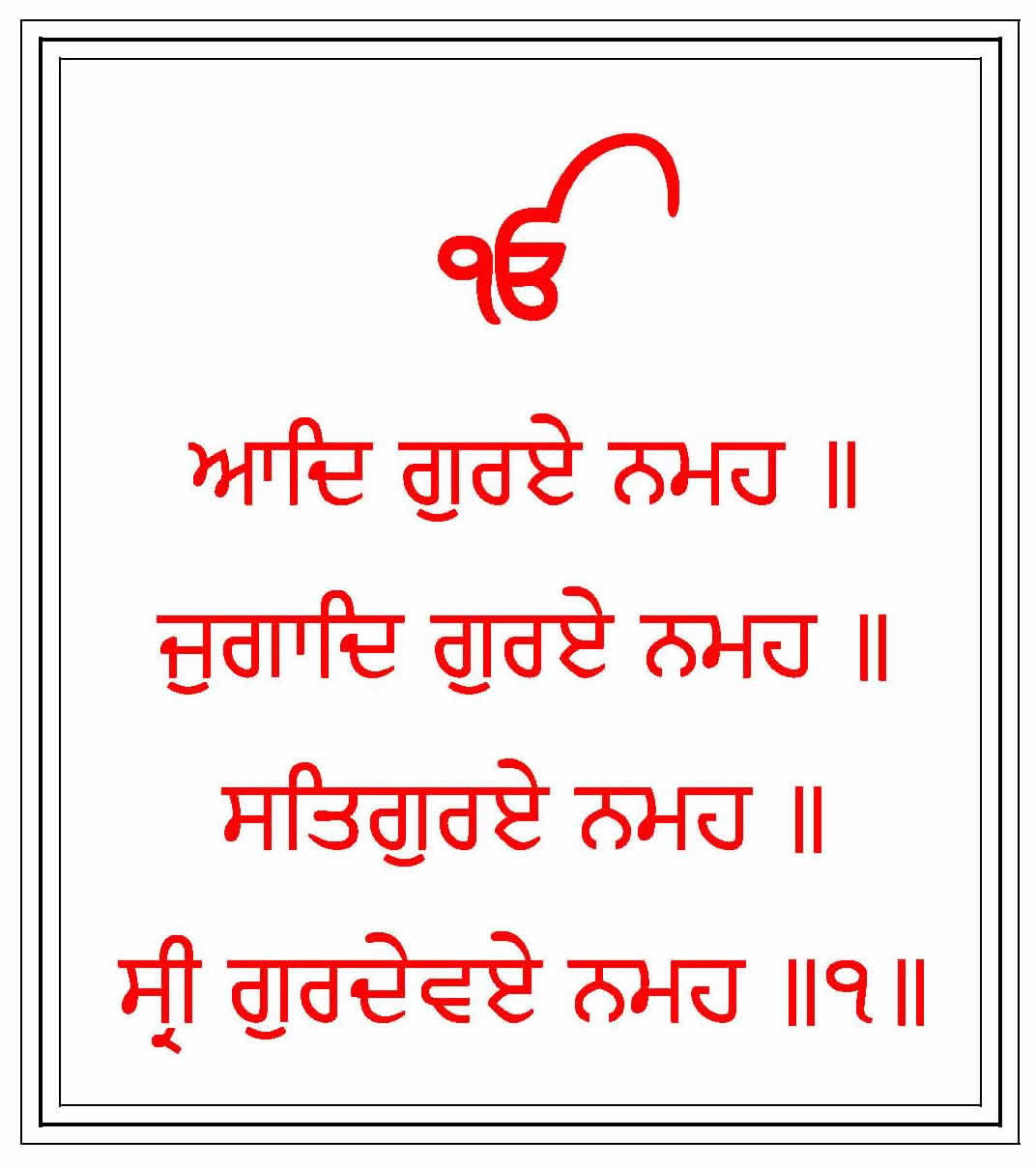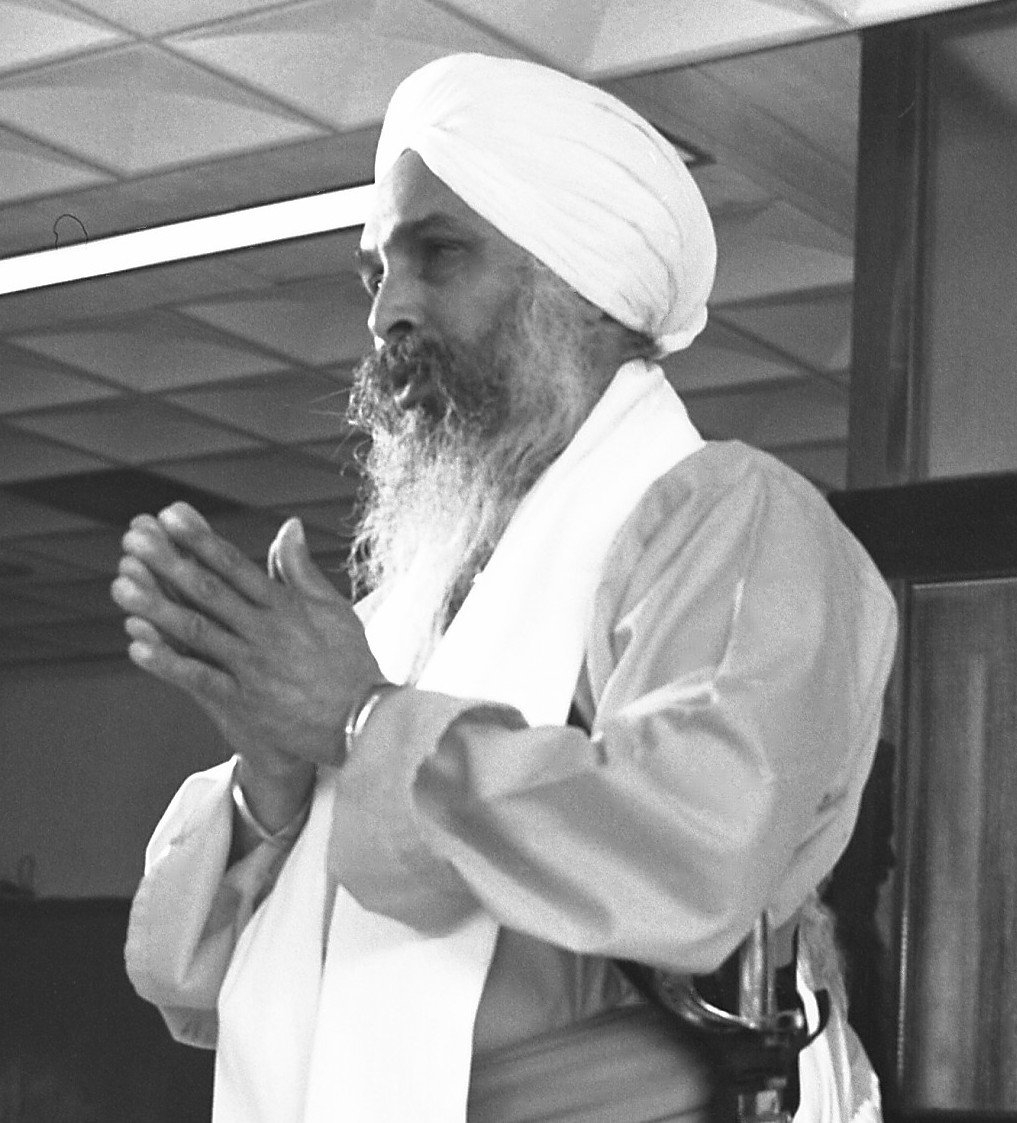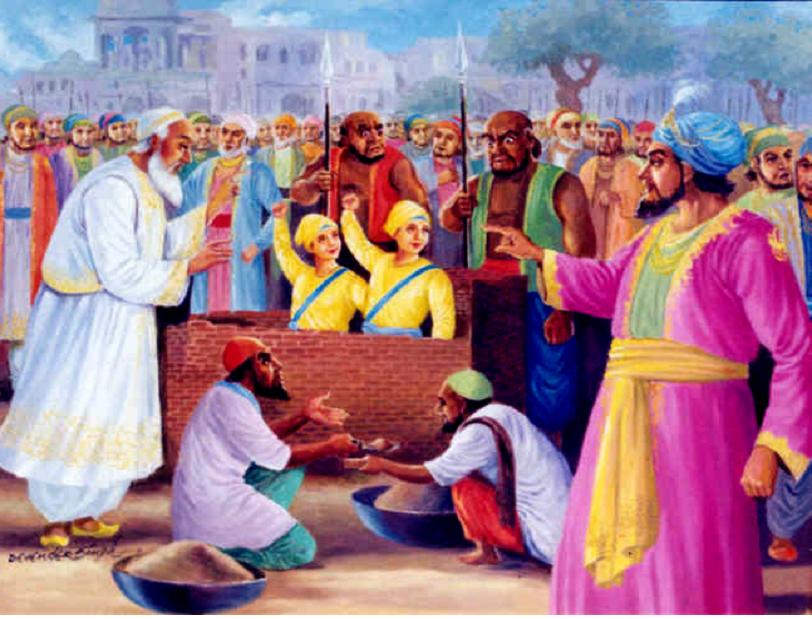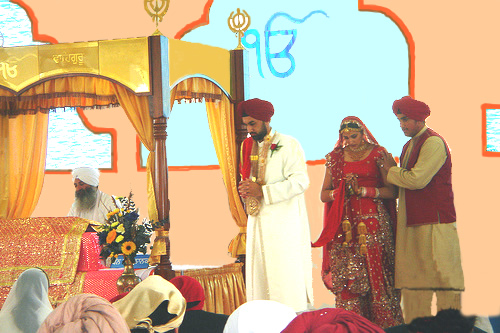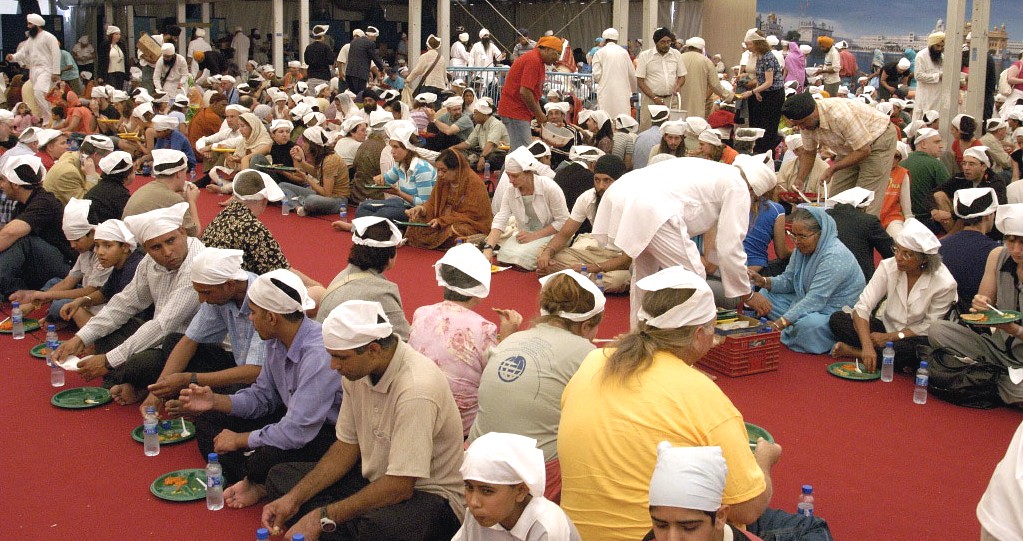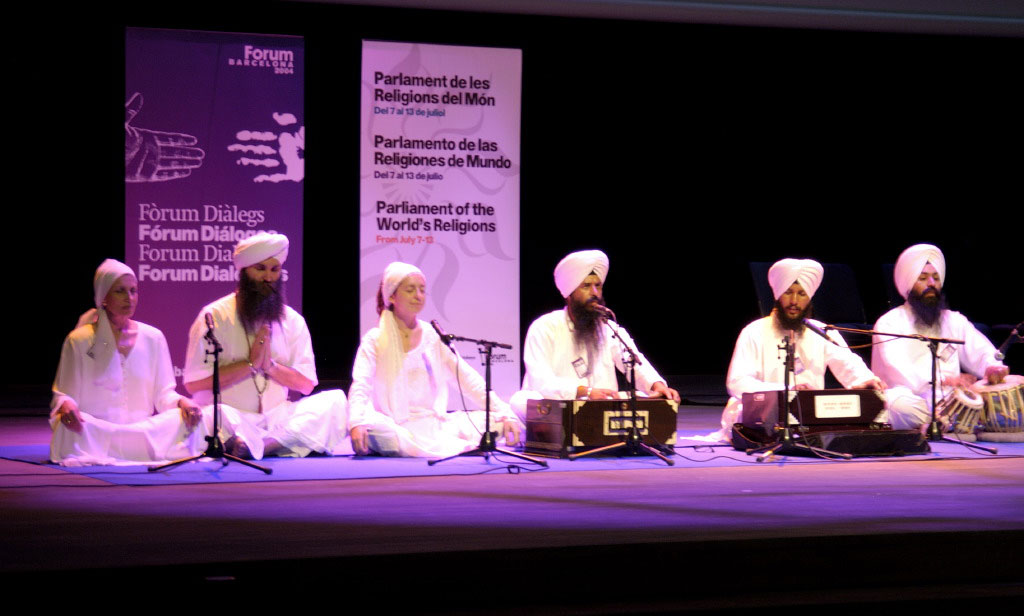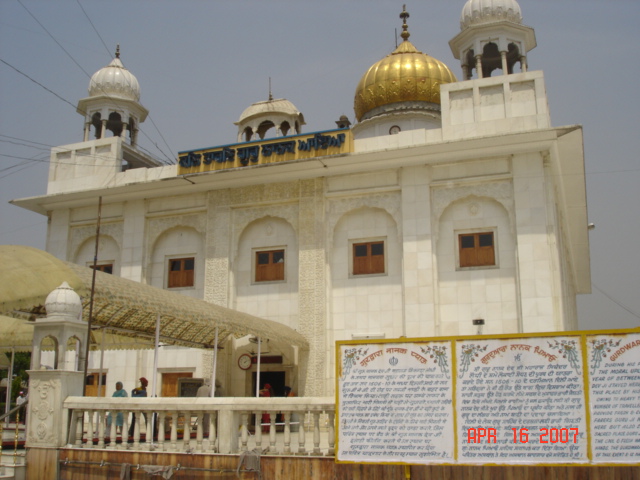SikhiWiki:Today's featured article/December 2008
Today's featured article archive
2007 -
2008 -
2009 -
January - February - March - April - May - June - July - August - September - October - November - December
Today is Saturday, November 1, 2025; it is now 22:00 UTC
Featured content:
| << | Today's featured articles for December 2008 | >> | ||||
| Su | Mo | Tu | We | Th | Fr | Sa |
| 1 | 2 | 3 | 4 | 5 | 6 | |
| 7 | 8 | 9 | 10 | 11 | 12 | 13 |
| 14 | 15 | 16 | 17 | 18 | 19 | 20 |
| 21 | 22 | 23 | 24 | 25 | 26 | 27 |
| 28 | 29 | 30 | 31 | |||
- December 1
SikhiWiki:Today's featured article/December 1, 2008
view – talk – edit – history
- December 2
SikhiWiki:Today's featured article/December 2, 2008
view – talk – edit – history
- December 3
SikhiWiki:Today's featured article/December 3, 2008
view – talk – edit – history
- December 4
SikhiWiki:Today's featured article/December 4, 2008
view – talk – edit – history
- December 5
SikhiWiki:Today's featured article/December 5, 2008
view – talk – edit – history
- December 6
SikhiWiki:Today's featured article/December 6, 2008
view – talk – edit – history
- December 7
SikhiWiki:Today's featured article/December 7, 2008
view – talk – edit – history
- December 8
SikhiWiki:Today's featured article/December 8, 2008
view – talk – edit – history
- December 9
SikhiWiki:Today's featured article/December 9, 2008
view – talk – edit – history
- December 10
SikhiWiki:Today's featured article/December 10, 2008
view – talk – edit – history
- December 11
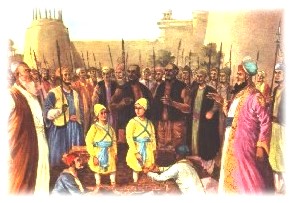
On December 12 every year, the global world Sikh community celebrate the birthday of their youngest hero and a brave comrade of Sikhism.
Sahibzada Fateh Singh (1699-1705) was the youngest of Guru Gobind Singh's four sons or sahibzade and was born to Mata Jito at Anandpur on 12 December 1699.
After the death of his mother, on 5 December 1700, he was brought up under the care of his grandmother, Mata Gujari Kaur, with whom he remained until his last breath.
He with his elder brother, Sahibzada Zorawar Singh have become an unbelievable and most unfortunate precedence in Sikh history (and perhaps also in world history) by becoming the youngest known martyrs to sacrifice their lives for their principles and the right to practice their religion and their faith without coercion or the threat of terror.
Even at such a tender age of 6 years, Baba Fateh Singh showed courage, determination and free-will not to be intimidated by the cruel, barbaric .....More
view – talk – edit – history
- December 12

On December 12 every year, the global world Sikh community celebrate the birthday of their youngest hero and a brave comrade of Sikhism.
Sahibzada Fateh Singh (1699-1705) was the youngest of Guru Gobind Singh's four sons or sahibzade and was born to Mata Jito at Anandpur on 12 December 1699.
After the death of his mother, on 5 December 1700, he was brought up under the care of his grandmother, Mata Gujari Kaur, with whom he remained until his last breath.
He with his elder brother, Sahibzada Zorawar Singh have become an unbelievable and most unfortunate precedence in Sikh history (and perhaps also in world history) by becoming the youngest known martyrs to sacrifice their lives for their principles and the right to practice their religion and their faith without coercion or the threat of terror.
Even at such a tender age of 6 years, Baba Fateh Singh showed courage, determination and free-will not to be intimidated by the cruel, barbaric .....More
view – talk – edit – history
- December 13

On December 12 every year, the global world Sikh community celebrate the birthday of their youngest hero and a brave comrade of Sikhism.
Sahibzada Fateh Singh (1699-1705) was the youngest of Guru Gobind Singh's four sons or sahibzade and was born to Mata Jito at Anandpur on 12 December 1699.
After the death of his mother, on 5 December 1700, he was brought up under the care of his grandmother, Mata Gujari Kaur, with whom he remained until his last breath.
He with his elder brother, Sahibzada Zorawar Singh have become an unbelievable and most unfortunate precedence in Sikh history (and perhaps also in world history) by becoming the youngest known martyrs to sacrifice their lives for their principles and the right to practice their religion and their faith without coercion or the threat of terror.
Even at such a tender age of 6 years, Baba Fateh Singh showed courage, determination and free-will not to be intimidated by the cruel, barbaric .....More
view – talk – edit – history
- December 14
Poh

(photo:Prabhu Singh)
Poh ( ਪੋਹ ) is the tenth month in the Nanakshahi calendar. This is a calendar system which govern activities within Sikhi. This month coincides with December - January of the Western /Georgian /Julian Calendar and this month is 30 days long. The month starts on December 14 and the season during this month is cold in Punjab (India and Pakistan} where Sikhi took birth. Many tourists from western countries visit north India during Poh as this coincides with the Christmas holidays when people in the west get holidays from schools and time off from their work.
The Guru tells us that in the month of Poh (December/January): "...the cold does not touch those, whom the Husband Lord hugs close in His Embrace. Their minds are transfixed by His Lotus Feet. They are attached to the Blessed Vision of the Lord's Darshan. Seek the Protection of the Lord of the Universe; His service is truly profitable. Corruption shall not touch you, when you join the Holy Saints and sing the Lord's Praises. From where it originated, there the soul is blended again. It is absorbed in the Love of the True Lord. When the Supreme Lord God grasps someone's hand, he shall never again suffer separation from Him. I am a sacrifice, 100,000 times, to the Lord, my Friend, the Unapproachable and Unfathomable"
(SGGS page 135) .....More
view – talk – edit – history
- December 15
Poh

(photo:Prabhu Singh)
Poh ( ਪੋਹ ) is the tenth month in the Nanakshahi calendar. This is a calendar system which govern activities within Sikhi. This month coincides with December - January of the Western /Georgian /Julian Calendar and this month is 30 days long. The month starts on December 14 and the season during this month is cold in Punjab (India and Pakistan} where Sikhi took birth. Many tourists from western countries visit north India during Poh as this coincides with the Christmas holidays when people in the west get holidays from schools and time off from their work.
The Guru tells us that in the month of Poh (December/January): "...the cold does not touch those, whom the Husband Lord hugs close in His Embrace. Their minds are transfixed by His Lotus Feet. They are attached to the Blessed Vision of the Lord's Darshan. Seek the Protection of the Lord of the Universe; His service is truly profitable. Corruption shall not touch you, when you join the Holy Saints and sing the Lord's Praises. From where it originated, there the soul is blended again. It is absorbed in the Love of the True Lord. When the Supreme Lord God grasps someone's hand, he shall never again suffer separation from Him. I am a sacrifice, 100,000 times, to the Lord, my Friend, the Unapproachable and Unfathomable"
(SGGS page 135) .....More
view – talk – edit – history
- December 16
When Farid ji was just a few years old, his mother taught him his prayers. The boy asked what was gained by his prayers. His mother replied 'sugar'.
Accordingly, she used to hide some sugar under his prayer-carpet, and when he had finished his prayers, she would draw the mat forth, and give the sugar to Farid as a reward for his devotion.
On one occasion, when his mother was absent, he prayed a great deal, and, it is said, a great supply of sugar - a miraculous gift from God - was found under his carpet. Some he ate himself and the rest he gave to his playfellows. He related the circumstance to his mother on her return. It was then his mother gave him the surname Shakar Ganj, meaning a "treasury of sugar".
There are 134 hymns of Sheikh Farid incorporated in the Guru Granth Sahib. Many Sikh scholars ascribe them to Farid Shakarganj (1173 – 1265) of Pak Pattan, a disciple of the Sufi Qutbuddin Bakhtiyar Kaki. The tenth in succession to his post was Shaikh Brahm (Ibrahim), also known as Farid Sani or Farid the 2nd, and it is this Farid who Guru Nanak Dev ji met on two occasions. .....More
view – talk – edit – history
- December 17

Image courtesy of Buzzle
The Sikh faith condemns empty rituals and superstitions. The practice of blind rituals, worshipping of idols or inanimate objects, participating in religious fasts, pilgrimage to holy places, offering of food to sadhus (religious leaders), or believing in any such religious or other rites, superstitions or fads is rejected by Sikhism.
These pointless practises will not bring one closer to God or make one a better human being. In all societies round the world, through fear and uncertainty, members undertake in ritualistic and worthless behaviour at times of worry, uncertainty or trouble. These poor people, wrongly believe that undertaking these empty customs and penances will bring them special assistance from Waheguru or some other higher power.
Superstition is an irrational belief arising from ignorance or doubt. Many people all around the world are gripped by various superstitions and they live their lives in fear and uncertainty. Most of these fears are irrational and superfluous but they still cannot unbind themselves from these sometimes evil and false notions. Some common and well-known examples of superstitions are:
- "When a black cat crosses one's path, something will happen if one crosses the line where the cat passed. To "undo" either wait for someone who didn't know about the black cat to cross the path or think of another route." .....More
- December 18
In Sikhism, the holy scriptures have clearly stated that the Sikh woman must always be regarded as an equal with man and has all the rights and privileges enjoyed by a man.
She is considered to have the same soul as man and has same right to grow spiritually.
In this faith since about 1499, the Sikh woman is allowed to lead religious congregations, to take part in:
- Akhand Path (the continuous recitation of the holy scriptures),
- to perform kirtan – Sikh spiritual hymn singing set to music,
- to work as Granthi (priest) or preacher and
- to participate freely in all religious, cultural, social, political and secular activities.
Sikh women have played a glorious part in Sikh history and have proven themselves as equal in service, devotion, sacrifice and bravery. Examples of their moral dignity, Sewa (service) and self sacrifice are and will remain an ever-lasting source of inspiration for all the peoples of the world.
Women are the backbone of the history of the Sikhs; their culture, their values and their traditions - yet there is little written about the huge contribution by the Sikh women to the great history of this religion. .....More
view – talk – edit – history
- December 19
The turban is closely associated with Sikhism. Sikhism or Sikhi is the only religion in the world in which the wearing of a turban is mandatory for all adult males.
Vast majority of people who wear turbans in Western countries are Sikhs. The Sikh turban is also called the pagdi or dastaar, which is a more respectful word in Punjabi for the turban.
All these words refer to the garment worn by both men and to a lesser extent by women to cover their heads. Some women prefer to wear a chunni instead of a turban.
The dastaar is a headdress consisting of a long scarf-like single piece of fine cloth wound round the head or sometimes over an inner "hat" or patka. Traditionally in India, the turban was only worn by men of high status in society; men of low status or of lower castes were not allowed or could not afford to wear a turban.
Sikh's are famous for their distinctive turbans. The turban represents respectability, and is a sign of nobility. .....More
view – talk – edit – history
- December 20
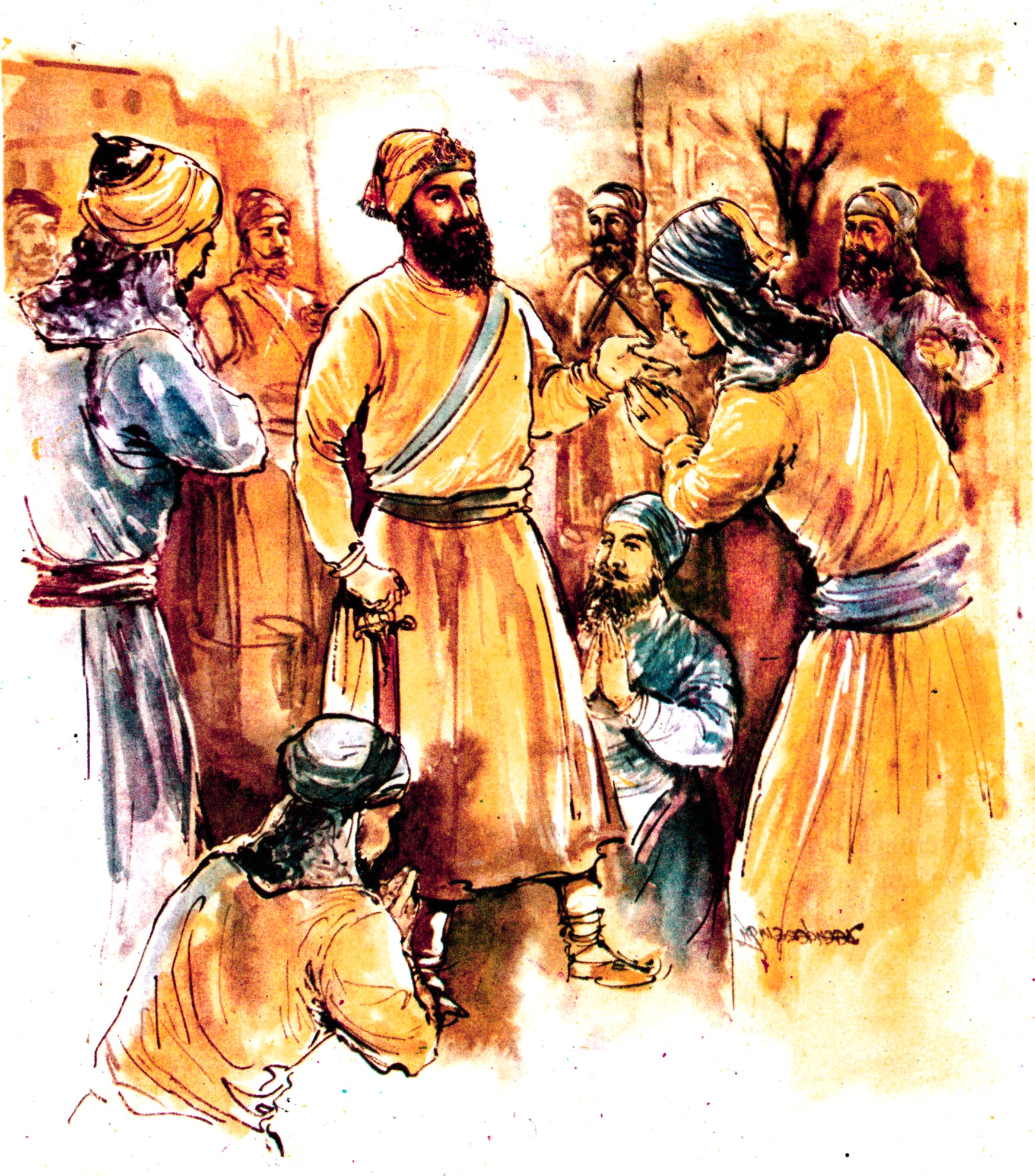
Every year on December 21, the Sikh community honors the two elder sons of Guru Gobind Singh who on this day in 1705 showed the world how to fight in battle; no matter how young you may be - the duty to Dharam and country comes first; before personal needs, pleasure and comforts.
It was around this time of the year that about 40 Sikhs in a mud fort were surrounded by over a 100,000 enemy soldiers. Then Baba Ajit Singh went before Guru Sahib and said, "Pita ji (dear father), permit me to go and fight on the battleground and grace me with the opportunity to make my life fruitful and worthy in service of the panth."
Guru Gobind Singh hugged his beloved son and gave him a Shastr (weapon). Every father wants to see their child get married, but this was the time to fight the enemy and defend the path of righteousness. Death was waiting and today Baba Ajit Singh would be marrying death.
The sun was about to rise. Guru saw that Nawab Wazir Khan wanted to take the fort of Chamkaur in one attempt. The Nawab surrounded the fort with his armies. Baba Ajit Singh boldly and valiantly came out of fort, accompanied with 5 other Singhs, .....More
view – talk – edit – history
- December 21

Every year on December 21, the Sikh community honors the two elder sons of Guru Gobind Singh who on this day in 1705 showed the world how to fight in battle; no matter how young you may be - the duty to Dharam and country comes first; before personal needs, pleasure and comforts.
It was around this time of the year that about 40 Sikhs in a mud fort were surrounded by over a 100,000 enemy soldiers. Then Baba Ajit Singh went before Guru Sahib and said, "Pita ji (dear father), permit me to go and fight on the battleground and grace me with the opportunity to make my life fruitful and worthy in service of the panth."
Guru Gobind Singh hugged his beloved son and gave him a Shastr (weapon). Every father wants to see their child get married, but this was the time to fight the enemy and defend the path of righteousness. Death was waiting and today Baba Ajit Singh would be marrying death.
The sun was about to rise. Guru saw that Nawab Wazir Khan wanted to take the fort of Chamkaur in one attempt. The Nawab surrounded the fort with his armies. Baba Ajit Singh boldly and valiantly came out of fort, accompanied with 5 other Singhs, .....More
view – talk – edit – history
- December 22
Sukhmani or Sukhmani Sahib is the title given to the Gurbani in raga Gauri Sukhmani in the Guru Granth Sahib which in turn appears in the major musical measure Raga Gauri to which it belongs.
It is a lengthy masterpiece, written by Guru Arjan Dev, the fifth Sikh Guru. The sacred prayer spans 35 pages from page 262 to page 296 of the Guru Granth Sahib.
Surprisingly, many ardent Sikhs include the recitation of this Bani in their daily regimen of Nitnem.
The physical site where, around AD 1602-03, the Guru composed this Gurbani was once enclosed by a dense wood. The location is still marked on the bank of the Ramsar pool in the city of Amritsar, near the famous Golden Temple or Harimandir Sahib.
It is said that Baba Sri Chand, elder son of Guru Nanak and founder of the Udasi order, came to Amritsar to meet Guru Arjan, then engaged in composing this Bani. The Guru who had by that time completed sixteen astpadis, or cantos, requested him to continue the composition.
Baba Sri Chand, out of humility, only recited the salok of Guru Nanak following the Mool Mantra in the Japji .....More
view – talk – edit – history
- December 23
We should not increase our burden of karmas by eating higher life forms. There is karmic value in every kind of thing we use in this world. The air we consume, the water we use, we have to pay for.
The light of the sun or moon is also not free...and this green grass is also to be paid for - nothing is free. Everything has a Karmic value.
Depending on the "Jun" (life-form), there is a price to be paid. Lower life forms have a lower price to pay. Fruits and plants have a lower spiritual price than animal life forms. So why take the higher burden?
We now refer to this sensitivity with new and fancy words like "our green foot print", "environmentally friendly", "eco-friendly", etc. However, all these words narrow down to a way of life that does the least damage to the world.
If you are to construct a house, you don't make it using gold or silver or jewels. If you can, you make the house of stone - Stone is very strong and cheap. So, why don't you make your own house with stone and brick instead of gold? This body is like a house. .....More
view – talk – edit – history
- December 24
Ardas is a unique prayer; It's an appeal to Waheguru; a way to address and petition the Almighty; to gain spiritual energy; to connect with God.
It is a very well-known Sikh prayer that was not written in its entirety by the Gurus. The Ardas is an ever changing plea, the contents of which depend on local concerns and personal issues.
The word Ardĝs ( ਅਰਦਾਸ ) is derived from Persian word 'Arazdashat', meaning a request, a supplication, a prayer, a petition or an address to a superior authority.
The power that this single prayer possesses is astonishing. Starting with "Pritham bhagautee simar kai, Gur Nanak laee dhiaa-e" and ending with "Naanak naam charhdee kalaa, tayray bhaanay Sarbat da bhala". The ardas encompasses so many Sikh and Humanistic values. It is more than just a prayer; it is a new concept of therapy for the elevation of the human spirit, mind and body.
The Ardas is usually done standing up with folded hands. The beginning of the Ardas is strictly set by the tenth Sikh Guru, Guru Gobind Singh. When it comes to the conclusion of this prayer, the devotee uses the word Waheguru .....More
view – talk – edit – history
- December 25
As the end of the year approaches, on December 26 every year, the global world Sikh community commemorate the martyrdom of three of their most beloved figures of the Guru household.
On this darkest of days, their youngest hero and bravest comrade of Sikhism, Sahibzada Fateh Singh (1699-1705) who was the youngest of Guru Gobind Singh's four sons, Sahibzada Zorawar Singh (1696-1705), his elder brother and Mata Gujari ji, his grandmother sacrificed their lives for their faith and the right to remain Sikhs.
Baba Fateh Singh with his elder brother, set a precedence in Sikh history (and perhaps also in world history) by becoming the youngest known martyrs to sacrifice their lives for their principles and the right to practice their religion and their faith without coercion or the threat of terror.
Even at such a tender age of just 6 years, Baba Fateh Singh showed courage, determination and free-will not to be intimidated by the cruel, barbaric and unjust authorities of the time. He showed composure, fearlessness and the renowned trait of unparalleled heroism becoming of the Sikh leadership and was prepared to sacrifice his life but not his faith. .....More
view – talk – edit – history
- December 26
As the end of the year approaches, on December 26 every year, the global world Sikh community commemorate the martyrdom of three of their most beloved figures of the Guru household.
On this darkest of days, their youngest hero and bravest comrade of Sikhism, Sahibzada Fateh Singh (1699-1705) who was the youngest of Guru Gobind Singh's four sons, Sahibzada Zorawar Singh (1696-1705), his elder brother and Mata Gujari ji, his grandmother sacrificed their lives for their faith and the right to remain Sikhs.
Baba Fateh Singh with his elder brother, set a precedence in Sikh history (and perhaps also in world history) by becoming the youngest known martyrs to sacrifice their lives for their principles and the right to practice their religion and their faith without coercion or the threat of terror.
Even at such a tender age of just 6 years, Baba Fateh Singh showed courage, determination and free-will not to be intimidated by the cruel, barbaric and unjust authorities of the time. He showed composure, fearlessness and the renowned trait of unparalleled heroism becoming of the Sikh leadership and was prepared to sacrifice his life but not his faith. .....More
view – talk – edit – history
- December 27
The laava (singular laav) are the four Shabads (sacred hymns) of the Anand Karaj (Sikh wedding ceremony). They form the central part of the marriage ceremony.
The "four rounds" ("char phaara") as they are sometimes called, form the main part of this auspicious occasion. The four Shabads that are central and form the key element of the Sikh marriage ceremony are from the Guru Granth Sahib, the Sikh holy scriptures and appear on pages 773 to 774 of the total of 1430 page of the holy Granth.
Guru Ram Das, the fourth Sikh Guru tells us on page 788 of the Sri Guru Granth Sahib about the meaning of marriage to a Sikh couple – Effectively, the Guru defines a Sikh marriage in these 2 lines:
"They are not said to be husband and wife who merely sit together. Rather they alone are called husband and wife, who have one soul in two bodies."
Thus the partnership of marriage is given a special meaning - a new dimension. For a union of marriage to be successful, the two personalities have to merge into one – a spiritual bonding through understanding and love.
The Guru through the four laava gives the Sikh couple further spiritual guidance for their life together; a journey together towards liberation and union with God. The Guru tell the Sikhs of the four golden rules of married life. These rules start very clearly to define the path to be threaded together in this sacred union. The Shabads inform us how the couple as a team has to .....More
view – talk – edit – history
- December 28
Langar or free kitchen was started by the first Sikh Guru, Guru Nanak Dev Ji. It is designed to uphold the principle of equality between all people of the world regardless of religion, caste, colour, creed, age, gender or social status.
In addition to the ideals of equality, the tradition of Langar expresses the ethics of sharing, community, inclusiveness and oneness of all humankind. "..the Light of God is in all hearts." (sggs 282).
For the first time in history, Guruji designed an institution in which all people would sit on the floor together, as equals, to eat the same simple food. It is here that all people high or low, rich or poor, male or female, all sit in the same pangat (literally "row" or "line") to share and enjoy the food together.
The institution of Guru ka Langar has served the community in many ways. It has ensured the participation of women and children in a task of service for mankind. Women play an important role in the preparation of meals, and the children help in serving food to the pangat. Langar also teaches the etiquette of sitting and eating in a community situation, which has played a great part in upholding the virtue of sameness of all human beings; providing a welcome, secure and protected sanctuary. .....More
view – talk – edit – history
- December 29
Sikhism is one religion, which is founded on the principles of global Interfaith communities and mutual Inter-community respect and harmony. The founders of Sikhism have, since 1469, defined and preached the principles of interfaith respect, dialogue and harmony.
A Sikh by definition must respect and accept all other world religions. Guru Nanak, the founding Guru of the Sikh faith said, "Your [God's] Divine Light is contained in all; everyone belongs to You." (SGGS page 414) So in this religion the holiness of all humans is recognised and respected, irrelevant of the person's religion.
Further, the Sikh must protect, guard and allow the free-practise of the customs and rituals of other religions. The SGGS says on page 142: One who recognizes that all spiritual paths lead to the One shall be emancipated.
The following are remarks made by distinguished personalities about the Sri Guru Granth Sahib and its interfaith message:
Arnold Toynbee: The Adi Granth is remarkable for several reasons. Of all known religious scriptures this book is the most highly venerated.
Pearl S. Buck: They (the Sikh Scriptures) speak to persons of any religion or of none. They speak for the human heart and the searching mind.
Dr. S. Radhaknshnan: The barriers of seas and mountains will give way before the call of eternal truth which is set forth with freshness of feelings and fervour of devotion in the Adi Granth. .....More
view – talk – edit – history
- December 30
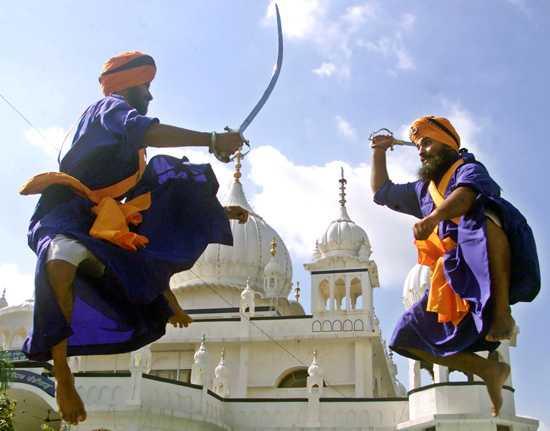
Gatka is an ancient martial art which has been thoroughly battle-tested and has existed in northern India for many thousands of years.
Although it uses the sword or (kirpan) as its primary weapon, many other weapons are available to the Gatka master.
Today, this art exists exclusively amongst the Sikhs who have passed down the flamboyant techniques through generations, since their sixth Guru, Guru Hargobind wore the two swords of Miri (temporal, worldly) and Piri (spiritual, transcendental).
The Sikhs have been responsible for the revival of this early art ensuring it's survival despite mass persecution of the native population in India by foreign invaders like the Mughals and others for many hundreds of years.
Gatka is a complete martial system which uses spiritual, mental and physical skills in equal portions to help one become fully competent in defending themselves and others. It is a system that can only be used as a last resort: "When all other means have failed, it is proper to take the sword in one’s hand" (Guru Gobind Singh) .....More
view – talk – edit – history
- December 31
Gurdwara Nanak Piao is a historic Gurdwara located in north Delhi in India. This Gurdwara sahib is dedicated to the first Sikh Guru, Sri Guru Nanak Dev.
This Gurdwara was built at the site where Guru Nanak Dev camped, in the garden when he visited Delhi in 1505 during the reign of Sultan Sikander Shah Lodhi. It is situated on Rana Pratap Road (also known as Grand Trunk Road or GT Road).
It is said that people flocked to the revered prophet and offered him and Bhai Mardana precious gifts and offerings. Guru Nanak used to distribute all these offerings to the poor and needy.
Besides this, he used to offer food and water to the hungry and thirsty, hence the name of the shrine. The word "Piao" mean to "offer liquid to drink" and refers to the offering of water to all the thirsty who visited this shrine.
Even today, the well used by the Guru is preserved and one can still see the well from which Guru Nanak served water at the shrine. Consequently, over time Gurdwara Nanak Piao attained a status of a holy and revered historical shrine. .....More
view – talk – edit – history
